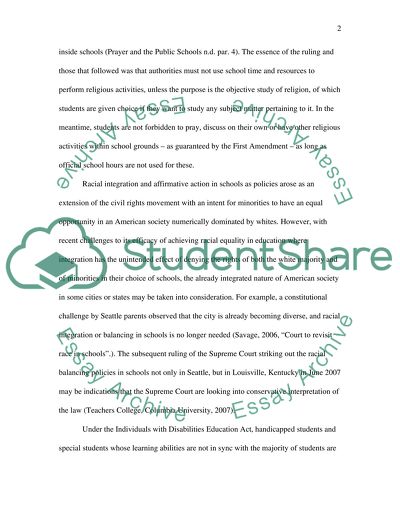The Role of the Courts in Education Essay Example | Topics and Well Written Essays - 500 words. Retrieved from https://studentshare.org/miscellaneous/1526789-the-role-of-the-courts-in-education
The Role of the Courts in Education Essay Example | Topics and Well Written Essays - 500 Words. https://studentshare.org/miscellaneous/1526789-the-role-of-the-courts-in-education.


